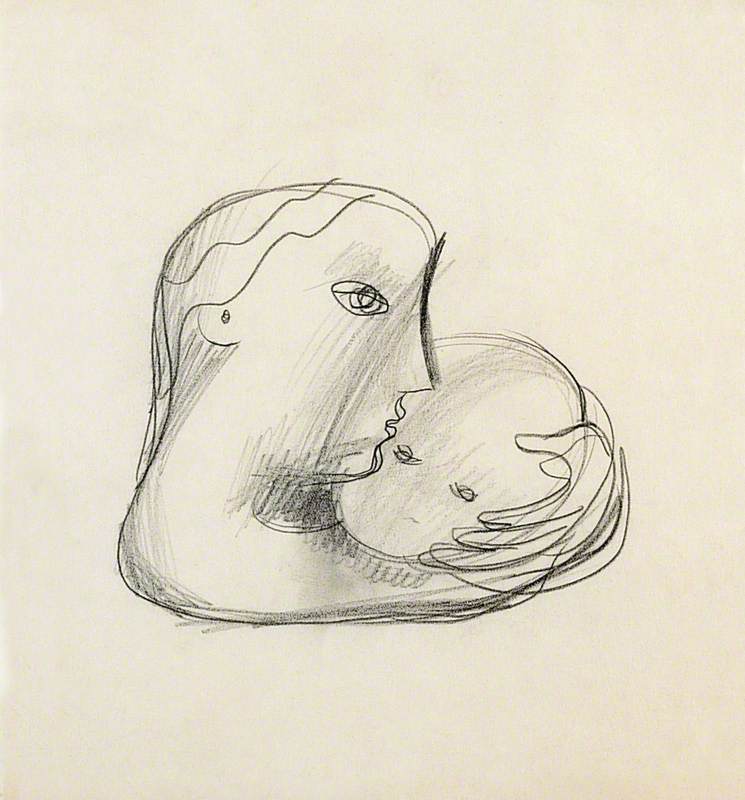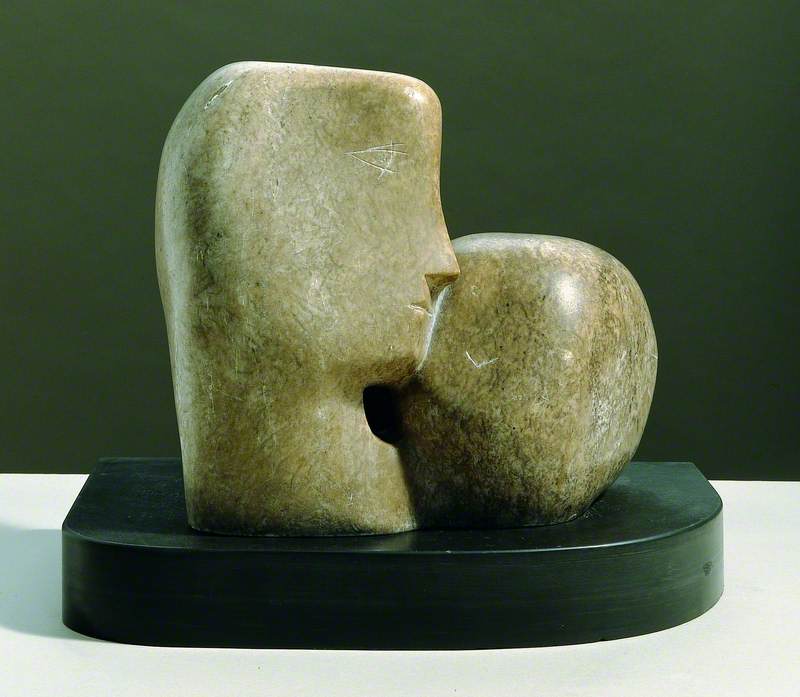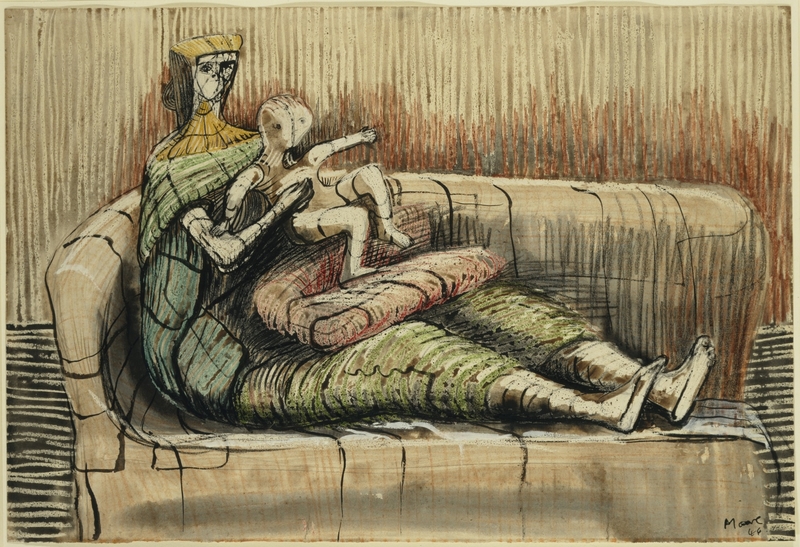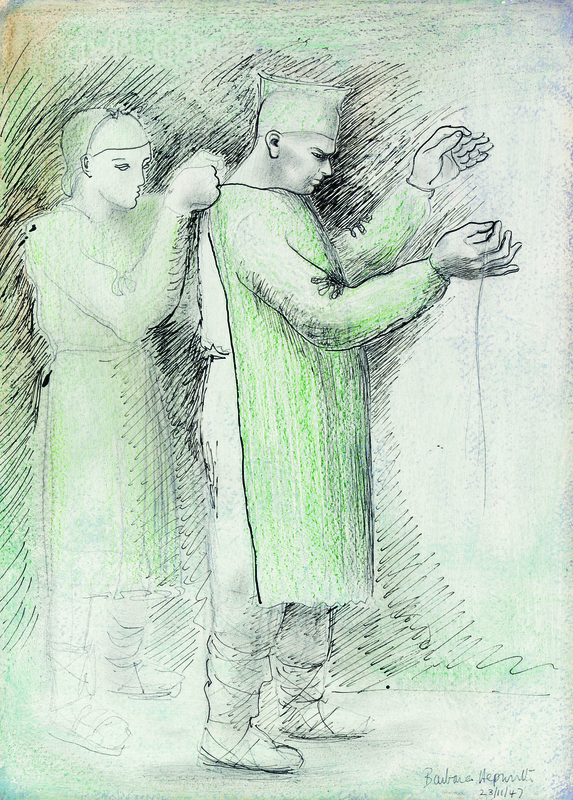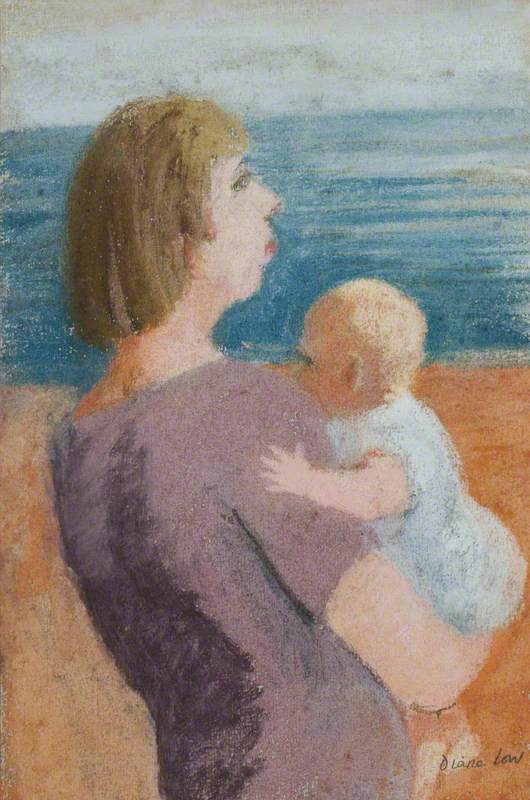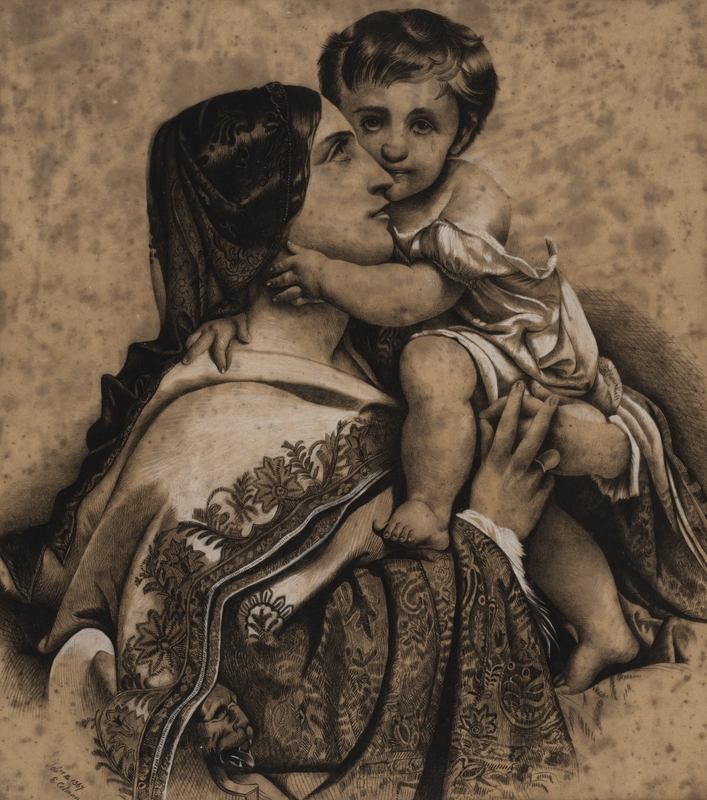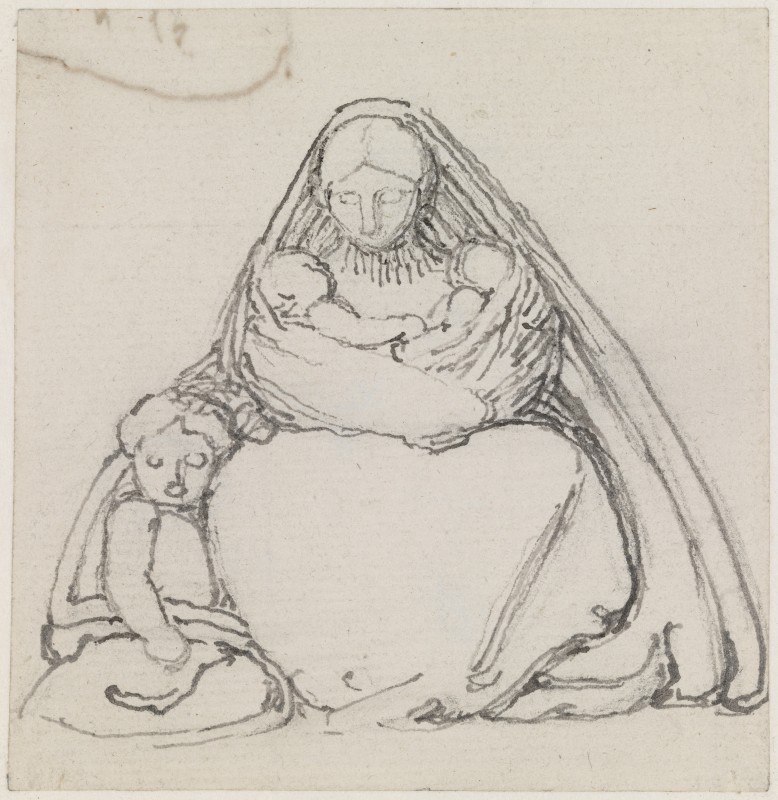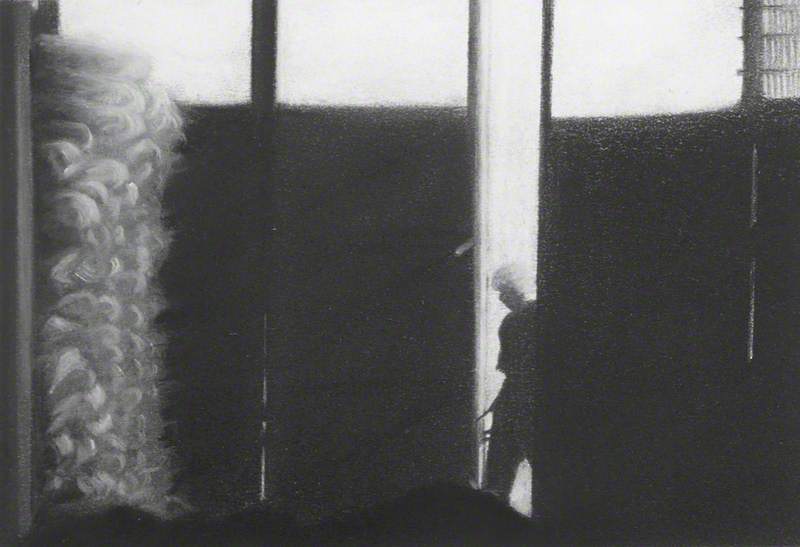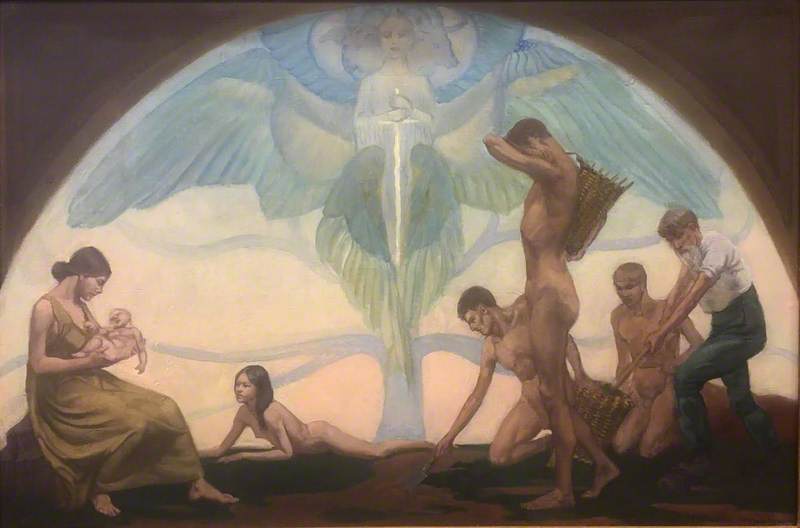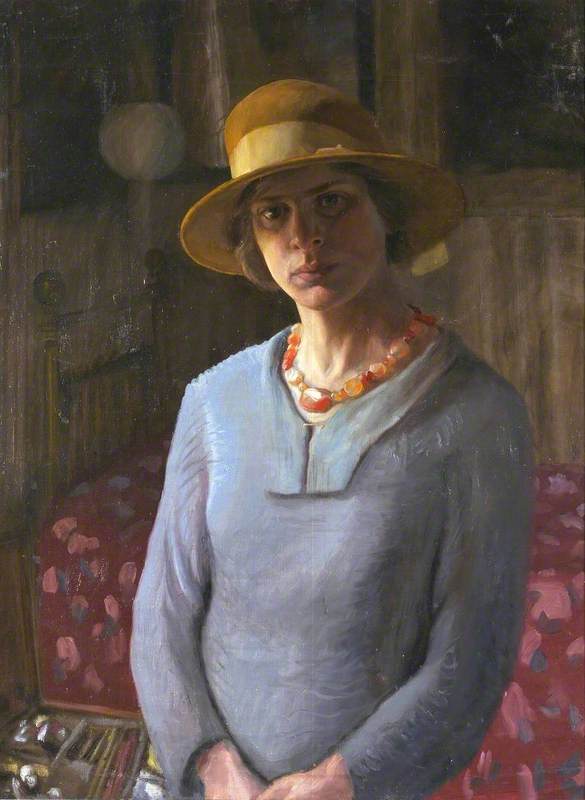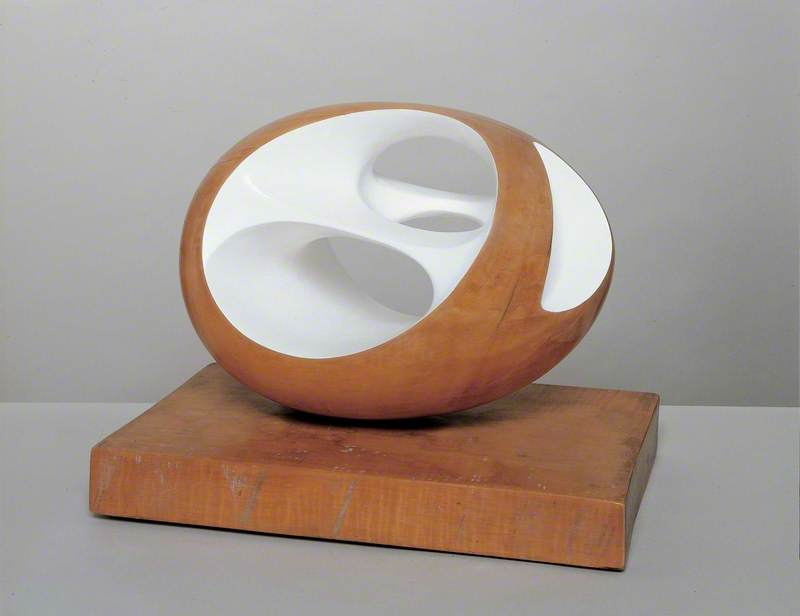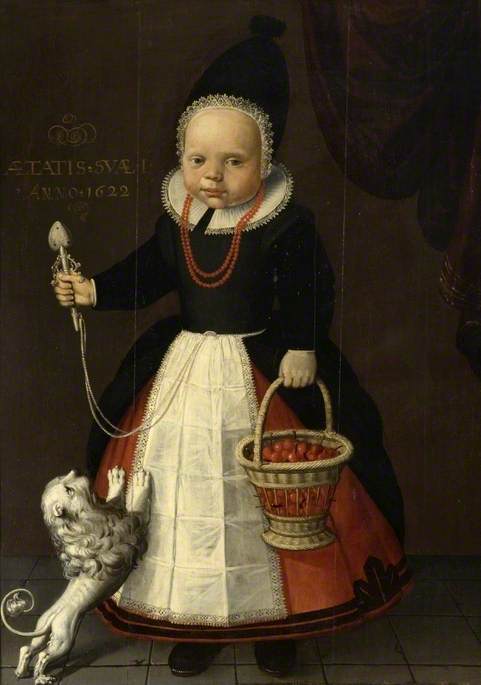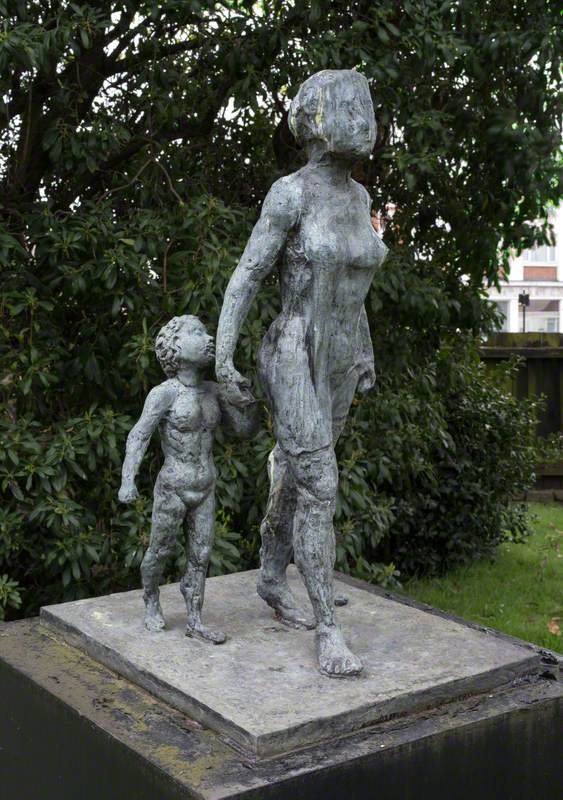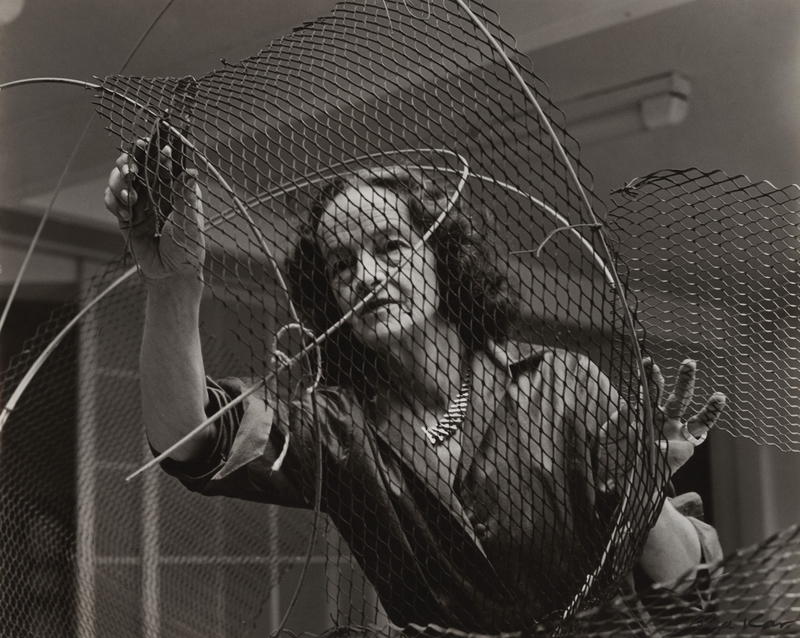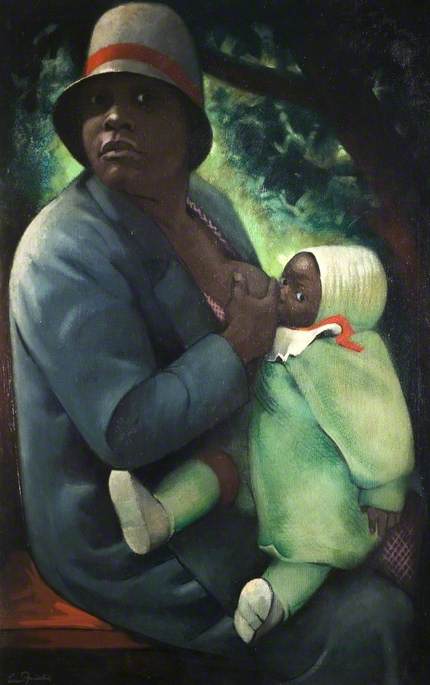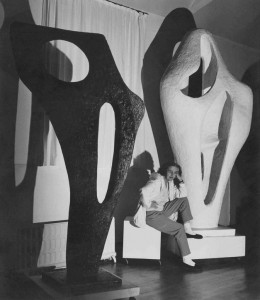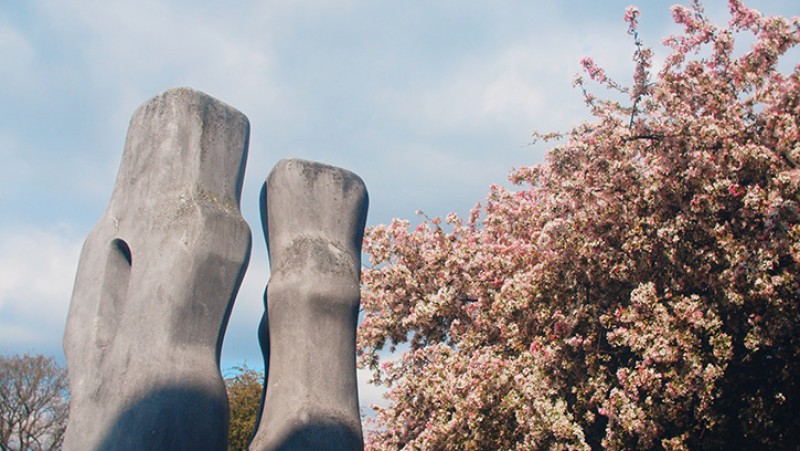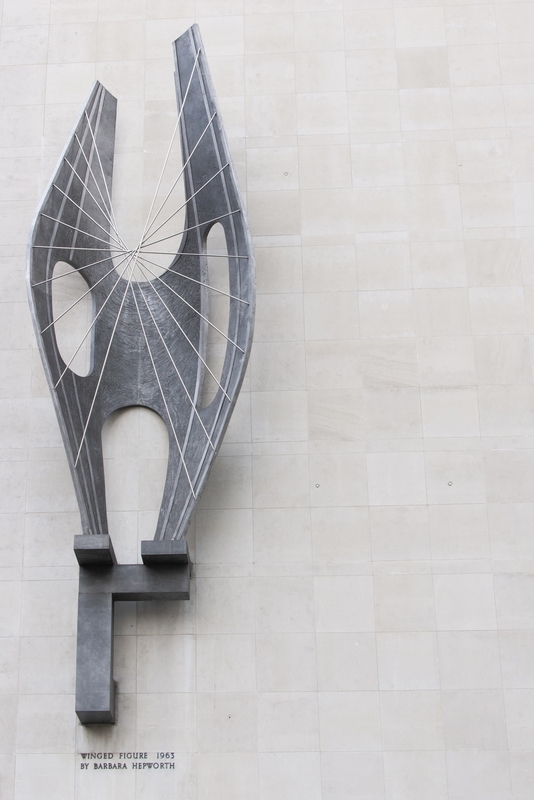Everything I understood about the world changed when my son was born. Time became a concept. Hours, minutes and weeks made no sense anymore. Feeding, nappies and tummy time were explained in books I read to prepare but there was nothing about the process of becoming two people after having existed as one.
When I look at Two Heads (Mother and Child) by Barbara Hepworth I am immediately in the mother's place. I can feel the closeness and the warmth of the two heads and relate to the blank stare, thinking everything and nothing all at once: all-consuming love coupled with relentless boredom that can take over after hours of holding and feeding. Having survived babyland, I want to step into this sketch and offer Hepworth a drink, some food and a rest. I want to tell her it gets easier and you will be able to read a book again.
Previously when I looked at Hepworth's Two Heads, I saw a mother giving her baby a cuddle, but now I know there is so much more going on in this image. This is Hepworth's first child: Paul. This is the first time she will have experienced this type of connection and those early feelings of fierce protection, fear and all-consuming love. Her hand holds her son Paul's head tightly. The lines are drawn over and over, creating a cradle for Paul's head. She is holding him so close that her face overlaps his and their silhouette is of one.
There is something about the eye. It has that familiar look of boredom and fatigue but the hands want nothing else but to hold the baby. Paul's eyes look tired. Hepworth knows that if she holds him close that little bit longer, he will fall asleep on her, but her hands will hardly be free to work. The heads float in the air.
This was always a drawing for a sculpture. By the time we see the finished sculpture, the heads are still overlapping but the hands have fallen away. The eye looks slightly brighter. The ear is gone. There is a small pocket of space by Hepworth's neck, which on the drawing is heavily shaded indicating she always intended this space.
I begin to wonder if, by the time she came to make the sculpture, the intensity of the hands felt no longer relevant to her experience. The fear of the newborn days dissipated but the closeness remained. Feelings of being 'touched out' may have begun. ('Touched out' is a phrase used by many mother bloggers and writers describing the discomfort felt by being touched or needed around the clock.)
Both this preparatory sketch and the sculpture were created around 1932. Paul was born in 1929. The sculpture has the same closeness but lacks the same warmth. Despite alabaster being a soft stone, it is still that: a stone.
Hepworth's sketch of Two Heads captures the intensity through the pencil strokes. The over-drawing of the hand amplifies the strength of the hold. The overlapping of the mother's face into the child gives the sense that the two heads are really one. As psychoanalyst Donald Winnicott said: 'there is no such thing as a baby…. A baby cannot exist alone, but is essentially part of a relationship'.
Motherhood is intensely political. Views of who can be a mother, how one can become a mother, and how one should mother are all entrenched in political standpoints. How close a mother and child should be is also something which different centuries have had differing opinions on, and still every other person will often have a differing opinion.
As Pragya Agarwal says on the first page of her book (M)otherhood, about the book itself: 'You might wonder if it is… a form of political writing'. Therefore we can read Two Heads in many different ways. But we must remember, as Claire Doherty reminds us in her essay in Barbara Hepworth Reconsidered, that Hepworth 'was not a feminist. And her work cannot and should not be read as radically subversive nor politically motivated'.
It is important to think about Hepworth's experience as a mother in relation to her work as she is often grouped with Henry Moore and their work does provide ample comparative opportunities. But as David Thistlewood argues in his essay in Barbara Hepworth Reconsidered, 'in her Mother and Child pieces Hepworth expressed empathetically what her male counterparts could only express mimetically… she represented "ambivalences and ambiguities of the maternal bond and state"...' which 'places the supposed emulation of Moore in questionable standing'.
As you can see from the many sculptures on Art UK, Moore was also keenly interested in the subject of mother and child, but I would argue his drawings as well as his sculptures have less intensity of emotion than Hepworth's.
There's something intimate about a drawing versus a sculpture or a painting. A drawing often asks the viewer to come closer: the details from a distance become harder to distinguish. It brings the viewer in. The sculpture can be less intimate and often can be seen from further away, although the texture of a sculpture can change this. Drawings as sketches are often much smaller than the final piece and the first draft is less refined. It has all the blurry edges of real life. It is messy like real life. The sculpture often by its very nature is more manicured.
When you care for anyone of any age, being efficient helps a great deal. There are lots of mum 'hacks' out there, such as don't go upstairs empty-handed, have snacks in your bag always, never leave the house without a change of clothes, etc. Perhaps drawing is that for the artist-mother: efficient. There's no dipping the paintbrush in the paint. There's no sourcing the stone, finding a space to carve. You pick up the pencil and put it straight onto paper.
Drawing is something Hepworth came back to when her daughter Sarah was hospitalised in 1944, with her 'Hospital Drawings'.
Drawing is like handwriting. A calm hand might draw one line, take its time, perhaps even practice on another piece of paper. A hand filled with stress may rush. The lines need to be overdrawn for clarity. Art teaches us to observe emotion.
Other artworks on Art UK of mother and child show a similar overlapping of lines, using the same lines for both mother and child. The artists are not simply illustrating hands touching or a child sitting on their mother's lap, they are positioning the children so close to the mother that the silhouette is that of one being.
Mother and Child with Elephant (1)
c.1914–1922
Helen Saunders (1885–1963) 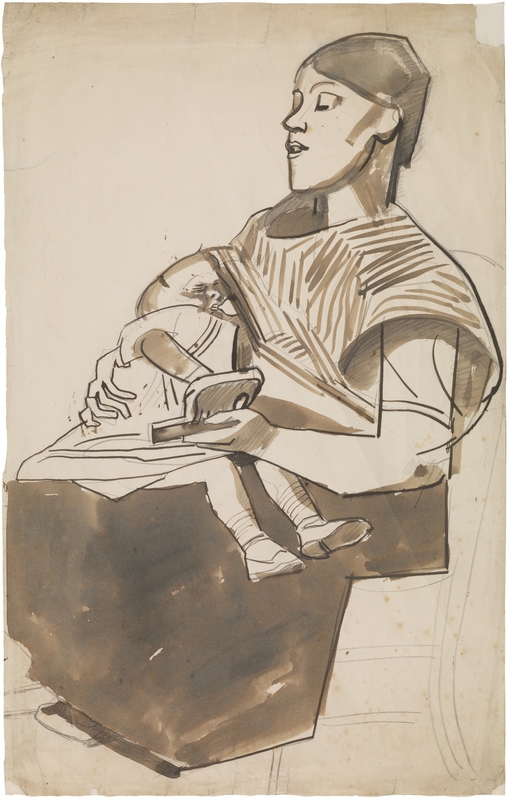
Helen Saunders draws an older baby and its mother. As detailed in the catalogue for 'Helen Saunders: Modernist Rebel', the model and the date of this work is ambiguous and the focus of description in this drawing is on the style rather than the way the subjects are depicted and their pose read.
It is a more finished work than Hepworth's sketch. There are two of these works: one where the mother seems calm and relaxed (Elephant 1) and another where the mother is squinting as though in pain (Elephant 2).
Mother and Child with Elephant (2)
c.1914–1922
Helen Saunders (1885–1963) 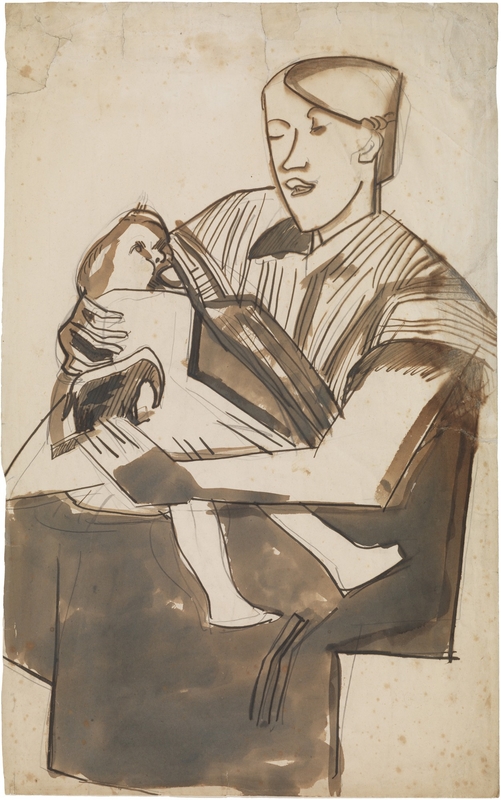
These drawings highlight two opposing truths that exist at the same time in motherhood: 'the best, most awful job' as Katherine May's book is titled. But again the mother and child become one silhouette: the child overlaps the mother's body. The air is relaxed but the right hand firmly grips the child. We are beginning to be exposed to many more honest representations of motherhood in literature and art nowadays where two truths can often be read. I would argue we can read many of these drawings in this way.
Mother and Child by Diana Low shows the baby perched in the crook of the mother's arm, the little hand pressing into the mother's arm. The mother looks out to sea in the same profile view as Hepworth, with a fierce and protective look. The mother's back curved gives a sense of the weight of the child. The pastels give it a hazy tone, one familiar with early motherhood.
Mother and Child by Ellen Coleman showcases a similar profile view with the mother's face overlapping her child's. She gazes into the child's eyes allowing the child confidence to gaze out at the viewer. Both arms and hands are wrapped around each other.
Even if the lines are not drawn by the mother, like in this drawing by John Flaxman, the artist as observer can begin to understand and empathise with the unit that is mother and child. The viewer is asked to look at the mother and child up close. Some may feel moved to put themselves in the position of the mother or the child – we've all been one or the other. Seeing your reality, past or present, reflected back at you can be illuminating. The intimacy of drawing draws us into the most intimate of relationships: where life begins.
Alice Read, writer, mother and arts marketer
This content was funded by the Bridget Riley Art Foundation
Further reading
Pragya Agarwal, (M)otherhood, Canongate Books, 2021
Nathaniel Hepburn, Barbara Hepworth: The Hospital Drawings, Tate, 2012
Katherine May, The Best, Most Awful Job: Twenty Writers Talk Honestly About Motherhood, Elliott & Thompson Ltd, 2020
Brigid Peppin, Jo Cottrell and Rachel Sloan (ed.), Helen Saunders: Modernist Rebel, Courtauld, 2022
David Thistlewood (ed.), Barbara Hepworth Reconsidered, Liverpool University Press and Tate Gallery Liverpool, 1996
